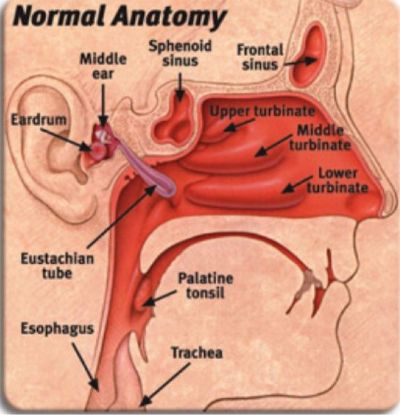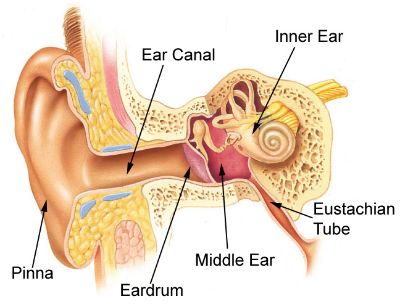Eustachian Tube Dysfunction

The eustachian tube or equalization tube is a tube that connects the middle ear cavity to the nasopharynx where the adenoid pad is along the back of the sinuses. It is part cartilaginous and part bony. It functions to equalize the pressure in the middle ear with the outside world. However when there are problems with the eustachian tube, various symptoms may develop in patients. This condition is termed eustachian tube dysfunction or ETD.
Symptoms of Eustachian Tube Dysfunction
When the eustachian tube is not functioning properly, patients can have various symptoms ranging from ear fullness or pressure, ear popping, ear pain (aka otalgia), ear ringing (aka tinnitus), fluid buildup in the middle ear (aka effusion), middle ear infection (aka otitis media) or dizziness and vertigo.
Causes of Eustachian Tube Dysfunction
This condition may be related to various different causes however chronic sinusitis or sinus problems, nasal congestion, smoking or vaping and barotrauma related to flying or diving are very common causes. As such if the source of the problem is not addressed the problem will become recurrent and extremely bothersome to patients. It’s never normal for this condition to last more than 2 weeks and if so a consultation with an ENT specialist is warranted.
Treatment of Eustachian Tube Dysfunction
Usually first-line treatment for the is condition is use of decongestants like Afrin or Sudafed for up to 3 days only, antihsitamines, and valsalva maneuvers to pop your ears. If this does not resolve the issue then your physician may recommend intranasal steroid sprays like Flonase or Nasacort, oral steroids, antibiotics if an infection is noted in the sinuses or middle ear and possibly antihistamines if allergies are worsening the issue. Often times cessation of smoking and vaping or hookah use is essential as well for long-term improvement.

However if these treatments do not help after 8-12 weeks of management, then procedures may be considered to address the condition. Dr. Cohen often recommends In-office balloon eustachian tube dilation w/ or w/o sinuplasty and/or turbinate reduction. These are simple procedures done in the office under local anesthesia in under 30 minutes and patients often return to work in 1-2 days.
Patients are amazed at the permanent resolution in their condition with this simple office technique. Some more advanced patients may need outpatient surgical endoscopic sinus surgery, adenoidectomy or middle ear tube placement to also address the condition permanently. Nonetheless, Dr. Cohen is an expert ear, nose and throat specialist in this condition who can address your problem definitively.
